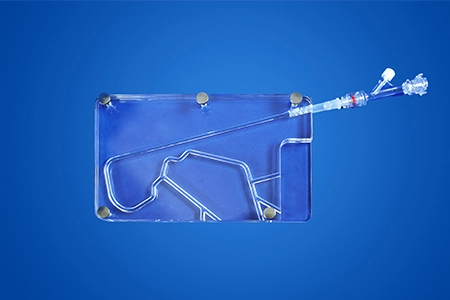The integration of virtual reality (VR) surgery training is revolutionizing surgical education by providing an immersive, risk-free environment for skill development. Unlike traditional methods—such as cadaver labs and observation-based learning—VR enables realistic haptic feedback, real-time performance analytics, and repeatable practice scenarios. For hospitals, medical schools, and device manufacturers investing in next-generation surgical training, VR offers unparalleled advantages in improving competency while reducing costs and patient risks.
1. Why Virtual Reality is Transforming Surgical Training
Traditional surgical training faces limitations:
Limited access to cadavers (high cost, ethical constraints)
Variable patient cases (reduces consistency in trainee exposure)
High-stakes learning curve (mistakes directly impact live patients)
Surgery VR training mitigates these challenges by:
✔ Simulating high-risk procedures (e.g., neurosurgery, laparoscopy)
✔ Enabling deliberate practice without time pressure
✔ Providing instant performance feedback (metrics on precision, speed, errors)
Studies show VR-trained surgeons achieve 25–40% faster skill acquisition compared to conventional methods (Journal of Surgical Education).
2. Core Applications of VR in Surgical Education
A. Pre-Operative Planning & Anatomy Visualization
B. Minimally Invasive & Robotic Surgery Simulation
C. Team-Based Emergency Scenarios
Case Study: Osso VR’s platform demonstrated a 230% increase in procedural accuracy among orthopaedic surgery residents.

3. Key Metrics: Measuring the Efficacy of Surgery VR Training
Institutions evaluating VR solutions should track:
| Metric | Impact |
|---|
| Procedure Time | Reduced operation duration |
| Error Rates | Fewer intraoperative mistakes |
| Confidence Levels | Trainee self-assessment improvement |
| Resource Savings | Lower reliance on cadavers/OR time |
Data-driven training ensures competency before live patient interactions.
4. The Future of VR in Surgery: AI Integration & Certification
Emerging advancements include:
AI-Powered Coaching: Real-time algorithm-driven tips (e.g., "Incorrect instrument angle—adjust 15°").
Procedural Certification: Regulatory bodies (e.g., ABS, ACGME) may soon mandate VR-based skill assessments.
Remote Collaborative Training: Global surgeons practicing together in shared virtual ORs.
For hospitals and educators, early adoption of virtual reality surgical training ensures compliance with future standards while producing safer, more skilled surgeons.

 English
English  中文
中文 


